These are the Black Masking Indians of New Orleans
“For more than 365 days, WWL Louisiana documented two Black Masking Indians, capturing each step and process as they made their suit.”
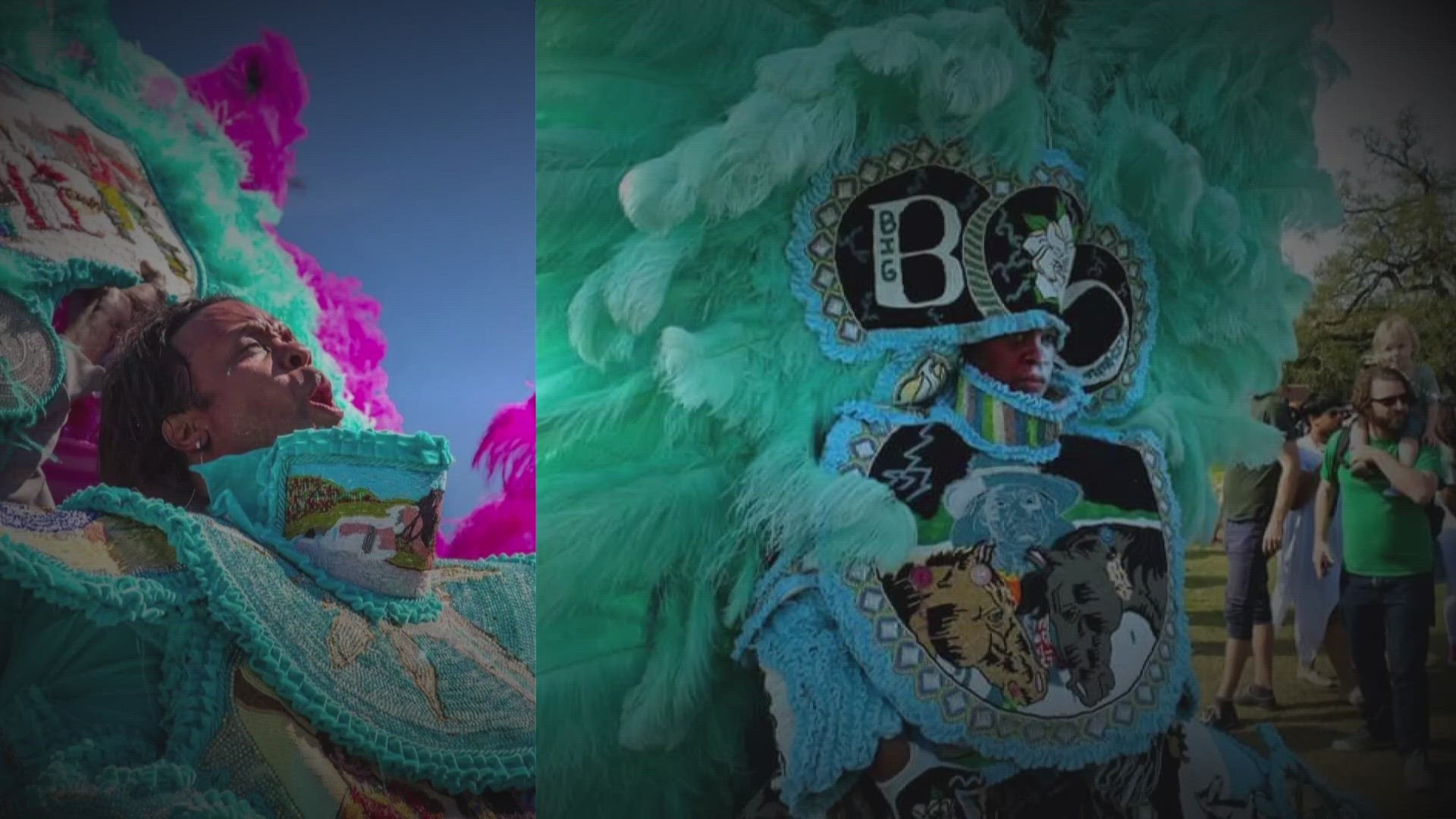
The New Orleans Black Masking Indians are an important part of the city’s history and culture. Their suits are intricate and thought-out works of art, some of those suits are now on display in museums across the country.
It takes Indians a full year to complete their suit, working hours, sometimes into the early hours of the morning to be ready to march come Mardi Gras Day.
WWL Louisiana’s Eleanor Tabone and Chief Photographer Chris Russell documented that process, for 365 days they followed two Indians, capturing each step as they made their suit.
A tradition only seen here in New Orleans. They are the Black Masking Indians.
Creating a Masking Indian suit
Big Chief of the Wild Magnolias Bo Dollis Jr. said, “My Indians have already started trying to find ideas… some people started sewing already, I like them to start early because during the year all things might happen.”

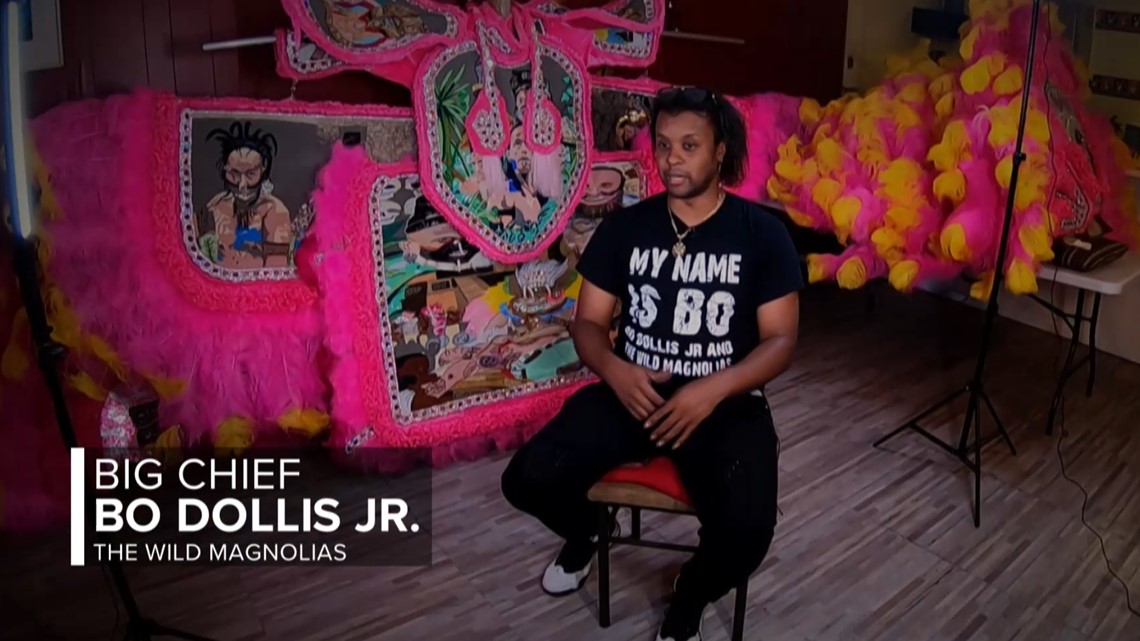
Gang Queen with the Wild Magnolias, Lashundra Brown says before making her suit, “The first thing we always do is, you have to get a storyline… before we pick a picture, before we pick a color, a bead size, we have to know what we want our suit to represent for the next year.”
Every part of a Black Masking Indian suit has a meaning. Brown said, “By me being a nurse… this past year I kinda stepped into the warrior side of it, because I felt like, as professionals, as women, as parents in this society we have multi-facets in our life. I needed people to see yes I am the healer, yes I come in and save the day, I make people better, but I will fight for mine.”
A mother to three, she is a protector, with her needle and thread she’s crafting her own destiny, stitch by stitch empowering herself along the way.

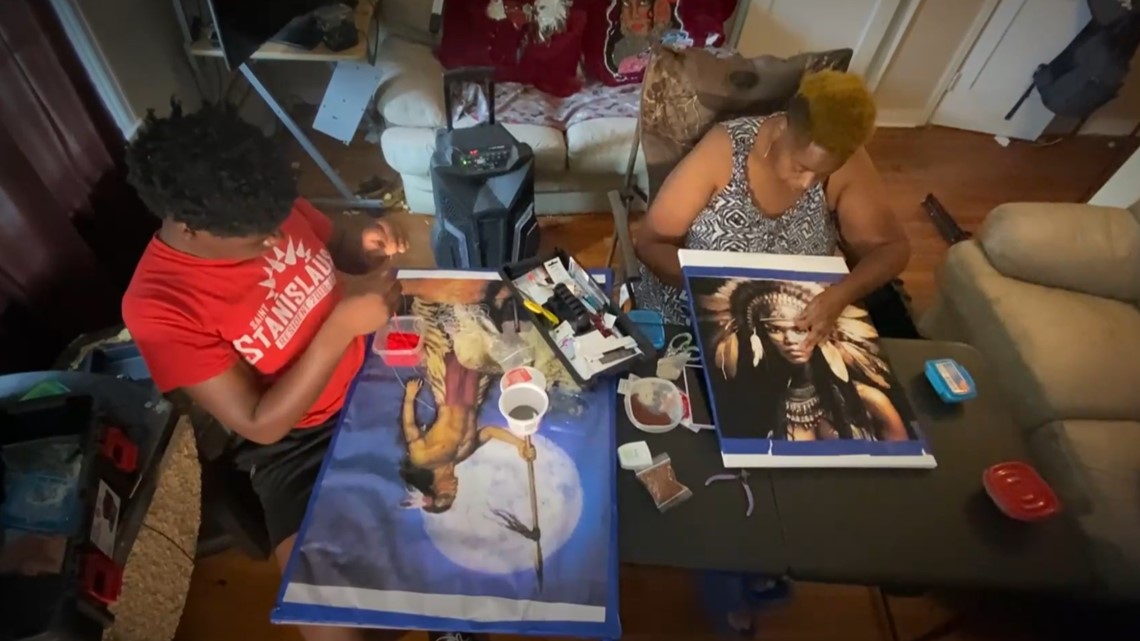
“Women have always been there, in the background whether we were just allowing people to shine or supporting our communities or our families… it takes a strong person to do that. So this year I am doing different African queens. Queens over there that came over here and were enslaved but they fought. So this year it's going to be about survival because it’s not the end of our story,” she said.
Big Chief Bo Dollis Jr. is more than just a chief, he said, “People think bringing the chief is easy, it’s way more than just going out there for Mardi Gras day.”
He went on to say, “You might have to be a marriage counselor, you might have to be a regular counselor, you might have to be a daddy to some children.”
Passing on tradition
He’s a community guardian and a father to two girls. Talking about his daughters, he said, “They’re both different, my oldest daughter, she’s the more laid back, “I know what daddy has to do”, She’ll help, she wants to come sew or put down stones stuff like that. My younger daughter is like “Why you got to go do this? You’re my daddy, you don’t have to go help them.”

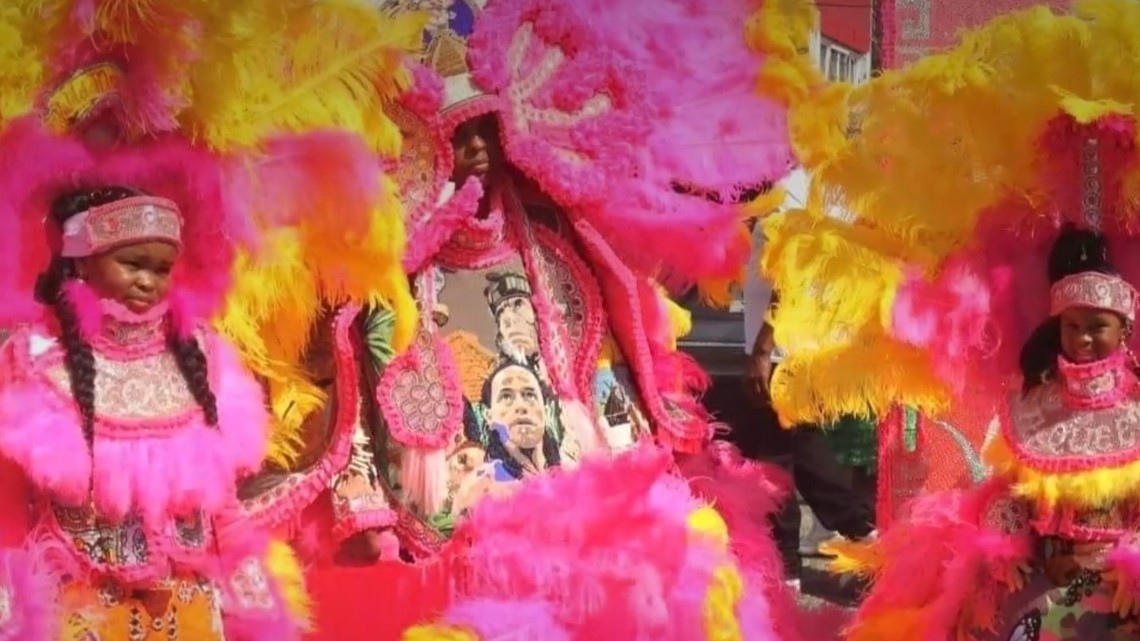
He’s instilling in his girls, and young Indians the importance of a village, he said, “When she sees everybody is together, she be like “Oh daddy you helped with that, cause I can tell you did that”… daddy has a responsibility to do, that teaches them too, that I will help anybody… somebody call me and ask how did you do this, and how did you do that, I will help them and show them how to do it, just to put more Indians on the street.”
He’s also teaching them the meaning of dedication and persistence. “When I leave here from work I might not go to bed till three or four o’clock in the morning, because I am sitting up sewing.”
Indians start by beading the outline of their design. Kacey Edwards, with the Bead Shop on Magazine Street, said, “We stock really heavy with the basic colors at this time of year, then towards the end of the year we’ll start stocking more of the fun colors that they might use in little bits.”
Inventory at the Bead Shop centers around the needs of the city’s Black Masking Indians. Edwards said, “Some of them know that they’re going to be using a ton so we’ll order them an entire kilo of one color.”
Partway through the design process, Brown said, “I added a generation because… I wanted to show the warrior that’s at every level in life.”
That’s exactly what a mother is, throughout every stage of motherhood, warriors. Brown will stand strong to shield her children. To highlight that, she decided to modify the symbolism of her suit.
“I have to include the warrior of the past, present, and future.”
Her son, 14-year-old JaCorey Elliot is masking too, masking gives young people the chance to showcase their identity through their suit.
Brown said to her son, “Woke us up the next day and he was like my colors are this, this and like, he has a theme. He is more prepared than I am… I ain’t got nothing figured out yet.”
Preserving Culture
They’re not Mardi Gras Indians, the history of the Indians runs deeper than Carnival. Native Americans sheltered enslaved people. As years went by the Black Masking Indians decided to have their own Mardi Gras, because they weren’t allowed to join in with carnival celebrations. Centuries later, they’ve created their own traditions, attracting onlookers from all corners of the globe.
Imagine Magnolia Street in the 1930’s, back then there was a shoeshine shop, which was also the local hangout spot. Some of the men who spent time there decided they wanted to mask and that’s how the Wild Magnolias was created. Fast forward nearly a century later, Big Chief Bo Dollis Jr. continues to preserve the culture and history of the tribe.”

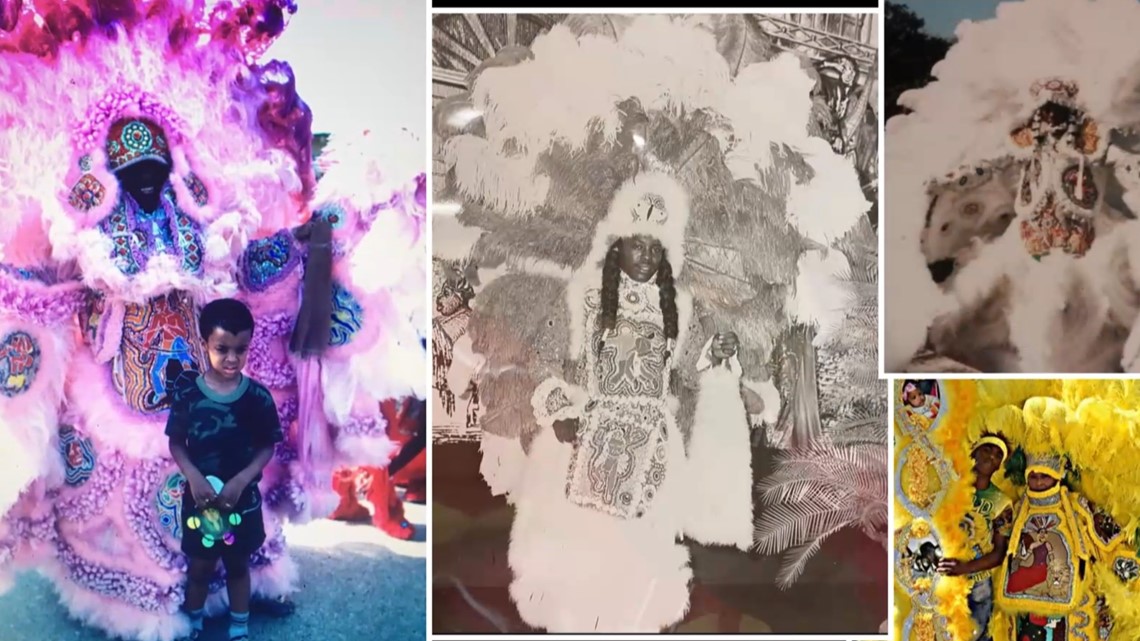
Preserved in the Louisiana State Museum is Big Chief Bo Dollis Senior’s 1971 suit, his first suit as chief of the Wild Magnolias. The museum bought the suit from the Dollis family, making it the oldest preserved suit on display in the country.
Dollis Jr. said, “When I came in here and saw this, it just brought back everything for me and seeing all the creativity he had, because even on the headpiece he had a hula-hoop he was sewing the feathers through and I am like Daddy you really want to put this hula-hoop on, every piece of ribbon that is on here is with needle and thread.”
Over time the feathers faded, so in his father’s memory, he’s refurbishing his father’s suit.
It’s a commitment being a Black Masking Indian, but no one knows that commitment better than an Indian themselves. The Wild Magnolias didn’t mask in 2024, Dollis Jr. said, “No we didn’t mask, because I am getting married soon… so when I did tell them we weren’t masking, I was going to let them mask, and all them was like oh no if you ain’t masking we ain’t masking. So we went out Mardi Gras and just had fun with everybody else but that just given us that little extra oomph because the day after Mardi Gras everyone was back sewing.”
Big Chief Bo Dollis Jr. knows one day he will have to pass his feathers on, but for now, he is Chief.
This is the Wild Magnolias. This is tradition. This is culture. This is history. This is New Orleans.
► Get breaking news from your neighborhood delivered directly to you by downloading the new FREE WWL-TV News app now in the IOS App Store or Google Play.

